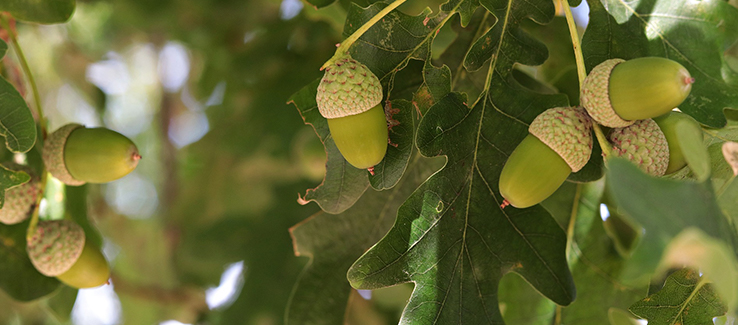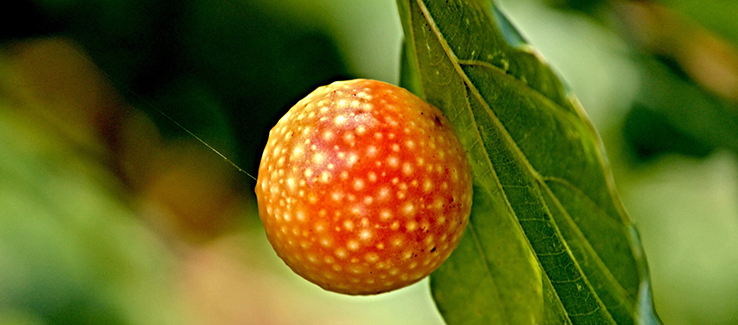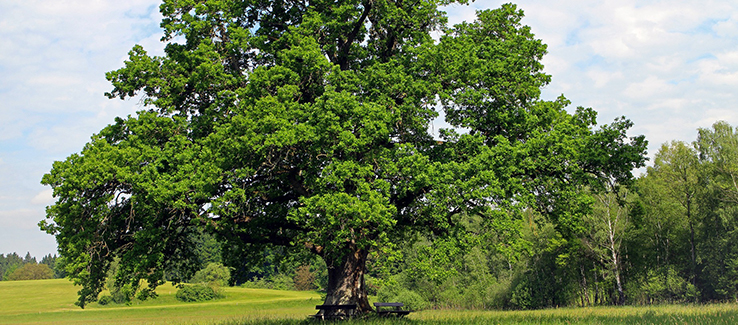Everything You Need to Know about Oak Trees
Don’t let your oak tree die from your lack of knowledge about its needs and warning signs. Knowing how to plant, grow, and properly care for your oak tree will help keep it healthy and thriving throughout its lifetime.
fasttreeremovalatlanta.com gathered the following crucial species, planting, and care information for oak trees.
Oak Tree Description
This species is typically a large, deciduous tree growing tall and wide. Also known as common oak, this tree species grows and matures to form a broad and spreading crown with sturdy branches beneath. It can be identified by its distinctive round-lobed leaves with short leaf stalks and, in winter, by its rounded, clustered buds.
Oak wood typically has a density of 0.75 grams per cubic centimeter, which is considerably more than pine wood (0.43 grams per cubic centimeter). Therefore, oak wood is recognized as the most durable, hard, and fungal-resistant material used for producing high-quality oak furniture and doors.
Oak trees benefit the environment by providing safe habitats and ample nourishment to wildlife and helping maintain good air quality by absorbing air pollutants. Mature oak tree canopies are efficient at preventing soil erosion by slowing rainfall and providing nutrients to the surrounding soil.
Oak Tree Information

Besides lending a strong branch for a child’s summer swing, Oak trees are a refuge providing food and shelter for numerous bird and animal species. Consider the following planting and care information:
Species – Quercus
Hardiness Zone – This species thrives in zones 5 through 10 but can survive in zones 1 through 11.
Preferred Soil – Oak trees are highly adaptable (growing in acidic, alkaline, loamy, moist, sandy, well-drained, and clay soils). While the tree prefers average moisture, it has some flood and drought tolerance.
Sun – Full sun and partial shade are best for oak trees. Oaks thrive in a minimum of four hours of direct, unfiltered daily sunlight.
Water – Water your oak tree once a week, giving it a deep, thorough watering around the trunk and surrounding area (to the outer edges of the tree’s canopy). This will ensure the tree has sufficient water to remain healthy and fully hydrated.
Growth Rate – Oaks are fast-growing and sturdy native shade trees. They are extremely long-lived and can grow 1 to 3 feet per year throughout their lifetime. This species grows fastest in its first 10 to 15 years.
Size at Maturity – Oak trees grow to a height of 40 to 80 feet and a spread of 60 to 100 feet.
Lifespan – An oak tree’s life span varies according to its species. However the average life span is about 100 to 300 years, but some species can live for shorter or longer times.
Oak Tree Pruning
Prune your oak tree’s crown during the winter months for three years after planting. Remove any low-growing branches (to force the crown into an attractive arching shape). Remove all branches with a narrow crotch to increase remaining branch strength, and consider the following when pruning your oak tree:
Make Cuts Outside the Branch Collar – The branch collar is the swollen area at the branch’s base (where it connects to the trunk). Trimming branches down to the branch collar will hurt the main trunk causing severe damage to vital growth/recovery tissues.
- Shorten large or heavy branches by cutting them back to a lateral branch or bud
- Always make angled cuts (this encourages growth)
Keep the Tree’s Crown Full – Never remove more than one-third of the tree’s canopy in a single season. The tree depends on a broad and healthy crown to create food from photosynthesis and grow healthy roots, and this is especially crucial when the tree is young.
Prune with a Purpose – Pruning branches from mature trees removes significant weight from the tree and can drastically alter its shape. It is crucial to consider which branches you will trim before making the cut. Pruning branches from mature trees should only be done for specific purposes:
- Removing dead, diseased, or broken branches
- Remove branches to promote more sunlight and airflow within the tree’s canopy. Be careful doing this as you want to avoid “over-thinning“ the canopy
Allow Your Tree to Heal – After pruning your oak tree’s branches, leave the wound alone to let the tree seal itself in the open air.
Note: Prune carefully to not injure the tree excessively, and make sure the tree has plenty of water.
Tip: Trees naturally seal cuts. It is not necessary to apply any sealants as this can trap microorganisms inside the tree and lead to severe disease threats.
As your oak tree matures, you will likely require a professional tree service to evaluate and prune your tree.
Oak Tree Disease Threats
Oak trees may be adversely affected by a variety of diseases. Always maintain healthy oak trees by following good tree care practices, which are the first line of defense in preventing most of these problems:
Oak Leaf Blister – Oak leaf blister is caused by Taphrina caerulescens. Blister-like patches appear on the leaves. They are often lighter green than the surrounding tissue, eventually turning brown.
Prevention & Treatment: Leaf blister is rarely severe enough to require control measures.
Bacterial Leaf Scorch – This disease is caused by the xylem-limited bacterium Xylella fastidiosa. It is characterized by a disruption of water (hydraulic) movement, rapid decline, reddening, or yellowing, followed by leaves browning, leaf drop, dieback, and eventual death.
Prevention & Treatment: Remove all infected trees and replant the area with resistant species.
Actinopelte Leaf Spot – This fungal disease may become a severe problem in wet weather. It is caused by Tubakia dryina (formerly called Actinopelte dryina). The symptoms include circular, dark to reddish-brown leaf spots with a typical ¼ to ½ inch diameter.
Prevention & Treatment: Destruction of all infected plant material should reduce the fungus’ spread. Rake up and dispose of fallen leaves.
Read more about oak tree diseases by visiting fasttreeremovalatlanta.com/9-oak-tree-diseases-identification-and-treatment
Oak Tree Insect Pests
Oak trees (Quercus species) are well adapted to their hardiness zone when planted and cared for properly. However, they still may be affected by a variety of diseases and oak pests:
Galls – There are over 750 different galls identified on oak tree species. In fact, more galls occur on oak than on any other plant type.

Control: Many gall-producing insects and mites are parasitized by other insects, then fed upon by birds and animals. Simply removing and destroying fallen leaves with galls will help reduce the number of emerging adults, naturally reducing the next generation.
Scale – Various kinds of scale insects are oak pests. Scales are unusual insects in appearance because, as adults, they are relatively small and immobile, with no visible legs.
Control: A combination of natural enemies, including ladybugs and parasitic wasps, usually keep scales controlled.
Oakworms – Three related moths (Anisota senatoria, A. stigma, and A. virginiensis) occur in southern regions of the US. Their larvae are oak pests feeding heavily on the tree’s foliage.
Control: With a mild infestation (on young trees), caterpillars can be handpicked and destroyed. On larger trees, control can be more difficult.
For more information on identifying troubled oak trees, visit fasttreeremovalatlanta.com/dying-oak-tree-symptoms
Oak Tree Care
In this article, you discovered species, planting, and care information needed to help you keep your magnificent oak tree thriving.
Properly caring for your oak tree will help you keep it healthy while it matures into a broad and glorious specimen tree on your landscape.
Ignorance of your oak tree’s needs will leave it susceptible to disease, insect infestation, decline, and premature death.
Sources:
gardeningsolutions.ifas.ufl.edu/plants/trees-and-shrubs/trees/oak-trees.html
plants.ces.ncsu.edu/plants/quercus/
hgic.clemson.edu/factsheet/oak-diseases-insect-pests/
uky.edu/Ag/Entomology/treepestguide/oak.html
(404) 220-9965
(404) 220-9963

